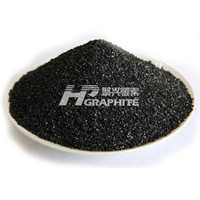Carbon neutral 40 years, industries transformation path and opportunities!

Carbon neutral 40 years, industries transformation path and opportunities!
At the beginning of this year, the state included "doing a good job in carbon peak and carbon neutralization" in the key task of the first year of the “14th Five-Year Plan”. Favorable factors soon spread in the capital market. Graphite powder F.C. 98.5% can be selected. In the secondary market, "carbon neutral" stocks has been a bright star. A stock was even pulled 21 trading boards, photovoltaic, hydrogen energy, new energy etc. have benefited from it. According to the statistics, the investment scale in the primary market has reached a record high (40.529 billion yuan) in only half a year, and the "target" is in short supply.


2021, also known as "the first year of carbon neutralization".
According to the "30.60" double carbon target proposed by China, China needs to achieve "carbon peak" by 2030, that is, carbon emissions will not increase after reaching the peak, and achieve "carbon neutralization" by 2060, that is, the "carbon emission" is equal to the "carbon absorption".
In fact, from cross-border trade to cell respiration, carbon emissions are everywhere, which also means that "carbon neutralization" is not only a national goal, but also involves millions upon millions of enterprises, capital market investors and each individual. In the next 40 years, whether it is the adjustment of economic growth mode, industrial structure and energy structure, or consumption mode, lifestyle and ecological construction will all be affected by this.
What is carbon neutralization?
The "culprit" of global warming is the continuous emission of greenhouse gases such as carbon dioxide from human activities.
According to the industry, the carbon dioxide generated by China's power generation and heating industry accounted for 51% of the country's total emissions in 2018, and the carbon emission is much higher than that of other industries. This is mainly due to the resource characteristics of "rich coal, poor oil and less gas" in China, which determines that the current power generation and heating industry is still dominated by coal combustion. The carbon dioxide emission of industrial industry accounts for 28%, which is the second largest carbon emission industry. Due to the high dependence on fossil energy, the production processes of iron and steel, cement, chemical industry and other industries produce relatively more carbon emissions. In addition, the carbon emissions of transportation industry and construction industry account for 10% and 6% respectively. It can be seen that the energy structure of many industries is still incompatible with the requirements of energy conservation and environmental protection, and the low-carbon and zero-carbon transformation of the industry is urgent.
In this context, in September 2020, China proposed the "30.60" double carbon goal at the United Nations General Assembly. Carbon peaking refers to the process in which carbon emissions do not increase and gradually decrease after reaching the peak. Carbon neutralization means that in a specific time, the future "carbon emission” and "carbon absorption" of each object (which can be global, national, enterprise, or even a product) are equal.
Carbon neutralization is urgent.
Four key elements to achieve carbon neutralization are indispensable.
Due to the contradiction between economic development and energy conservation and emission reduction, energy transformation technology, social concept transformation and other problems, carbon neutralization transformation opportunities and challenges coexist. To achieve carbon neutrality, four key elements are indispensable.
First, technology is feasible: vigorously developing replicable and popularized low-carbon technologies is the fundamental path to achieve the goal of carbon neutralization. In the coming decades, it can be predicted that a series of low-carbon technology development routes centered on CCUs technology, renewable energy technology, electrification technology and information technology will play an irreplaceable role in energy transformation.
Second, the cost is controllable: the development of green and low-carbon technology will certainly promote the comprehensive upgrading of China's technological transformation and form international competitiveness, but the research and development of technologies need to be "paid" by enterprises, and the application of low-carbon technology will also increase the cost of intermediate products and terminal consumer products in all links of the industrial chain. Therefore, the realization of carbon neutralization goal needs to consider the balance between low-carbon and market development, and achieve cost control on the premise of technical feasibility, so as to achieve sustainable development.
Third, policy guidance: due to tight time and heavy tasks, China's road to decarbonization puts forward more stringent requirements for the adjustment of industrial structure, production mode and the change of social life style. This requires government departments to play the role of "baton", implement a series of carbon emission reduction policies by improving industrial emission standards, establishing carbon tax collection mechanism, establishing and improving carbon emission trading market and building a green financial system, so as to provide policy support and guidance for enterprises to develop new carbon emission reduction technologies.
Fourth, multilateral win-win: to achieve the goal of carbon neutrality, on the one hand, it needs international cooperation and exchanges, on the other hand, it also needs the concerted efforts of the upstream and downstream interest communities of the industrial chain, so as to achieve mutual benefit and win-win cooperation.
6 major industry transformation opportunities
Carbon emission reduction has become a hard target. 2021 is called the first year of carbon neutralization. What are the transformation paths and opportunities of various industries in the transformation process in the next 40 years?
The goal of carbon neutralization proposed by China has accelerated the low-carbon green transformation of the energy system.
The energy system is divided into supply side and demand side, which involves the development of six major industries: electric power, non-electric power, industry, tran
On the supply side, it is divided into power carbon neutralization and non power carbon neutralization.
Realizing power carbon neutralization is the core of China's carbon emission reduction, but the energy demand in many fields can not only rely on power substitution to realize electrification transformation. For example, long-distance transportation, steel, chemical and other industries need hydrogen as fuel due to their production characteristics. Therefore, non power development is also a very important part of supply side carbon neutralization.
1. Power carbon neutralization:
In 2019, China's coal-based power generation accounted for 63.9% of the total power generation, while coal-based power has serious pollution and large carbon dioxide emissions. Therefore, it is an arduous task to reduce this huge figure to almost zero.
This requires the development of renewable energy. It is necessary to develop renewable energy power generation technology focusing on wind power and photovoltaic power generation, give play to the basic guarantee role of hydropower, reduce dependence on thermal power, phase out coal power with backward capacity, safely develop nuclear power, and improve the flexibility of power grid through the development of pumped storage, hydropower and other technologies to meet the power demand.
In addition, building a new power system is a power system with the theme of new energy. In the future, the new power system will be dominated by wind and solar energy generation and complementary wind, light, water and fire energy storage.
In addition, we need to vigorously develop energy storage technology, in which hydrogen energy will gradually become the mainstream long-term energy storage technology.
2. Non-electric carbon neutralization:
If electric carbon neutralization is the only way forward for China's carbon neutralization goal by 2060, then non-electric carbon neutralization is the last 100 meter sprint on this road. At present, non-electricity accounts for more than 50% of China's energy demand. Transportation, chemical industry and other fields are highly dependent on combustion energy, which is difficult to be replaced by electricity, the development and utilization of clean energy is very important.
This requires promoting the development of hydrogen energy and accelerating the utilization of biomass energy.
On the demand side, energy conservation and emission reduction relying on technological transformation is the core, especially in industries with large carbon emissions, such as industry, transportation, construction and service industries. The decarbonization path of these industries is of great significance to China's carbon emission reduction.
1. Decarbonization of industrial industry: focus on the problems of iron and steel, cement and chemical industries.
2. Decarbonization of transportation industry: low-carbon transformation will be carried out in various transportation channels such as highway, railway, sea and shipping.
3. Decarbonization in construction industry: mainly managed in three stages: production and transportation of building materials, building construction and building operation, that is, the life cycle of the whole construction process for management.
4. Decarbonization of service industry: specifically including express logistics industry, residential service industry, retail industry, fine communication technology industry and other service industries. More latest news of Carbon neutralization from us.
No related results found








0 Replies